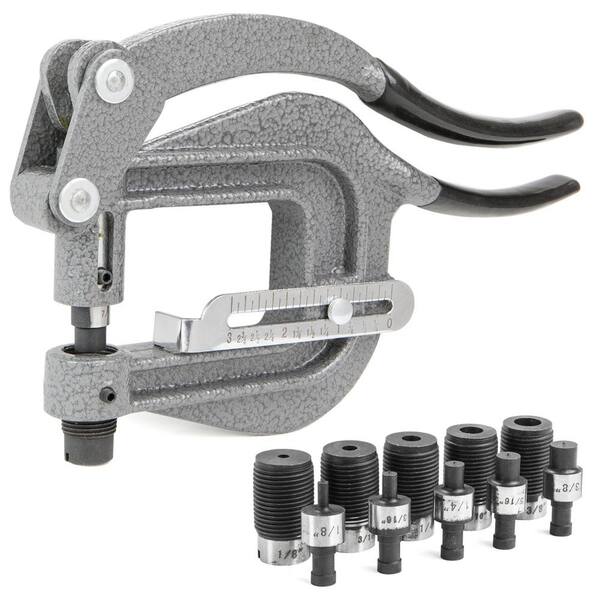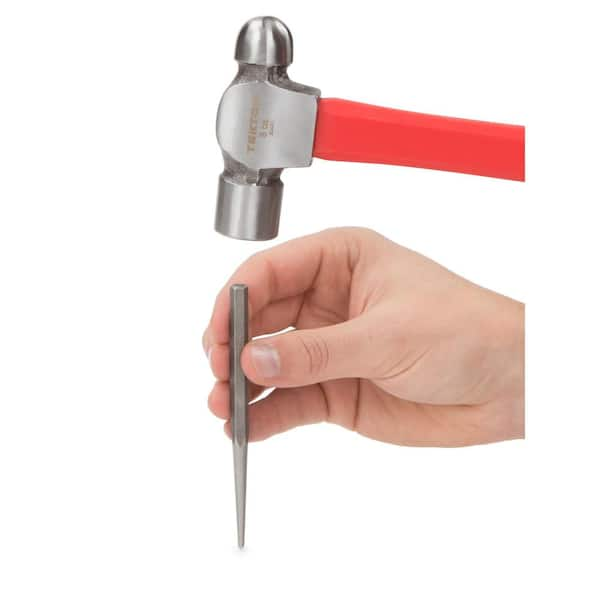
- #NAIL PUNCH HOME DEPOT MANUAL#
- #NAIL PUNCH HOME DEPOT PORTABLE#
- #NAIL PUNCH HOME DEPOT PROFESSIONAL#
It all boils down to what you're trying to accomplish.” But if you're not restricted in your movements and especially need extra power, go corded. If working in a tight area where you don't need a lot of Thomas Hawkins, handyman, master electrician, and owner of Electrician Apprentice HQ, expands further, advising, “The corded versus cordless debate depends upon the project. Most DIYers prefer cordless electric nail guns, but the right choice for you depends on the size and type of project you'll be tackling. You'll find nail guns powered by air compressors that are generally very powerful, as well as corded and cordless electric nail guns.


While there are a lot of nail guns out there, and several different types, the most popular choice for DIYers is a brad nailer, which handles the majority of projects around the home.

But when you face a multitude of nails–maybe you’re erecting a fence, reroofing your home, or building a deck–you’ll find that a nail gun gets the job done a lot faster and is less tiring to your hands, arms, and shoulders. To help make your decision even easier, consider the following top-rated choices for each type of nail puller.If you just need to pound in a couple of nails, a hammer is the quickest and easiest way to get the job done. Now that you know something about the different types of nail pullers, you can make an informed decision about which type is the best nail puller for your project. These save a lot of time and effort when you’re trying to denail a large number of wooden boards to be reclaimed, but they aren’t as useful for removing fastened boards that require pulling the nail head out-not through- the wood.
#NAIL PUNCH HOME DEPOT MANUAL#
Instead of using manual force as you would with a handheld nail puller, all you have to do to operate an air punch is slip the nose of the punch over the nail and pull the trigger. Powered by compressed air, they eject a small metal rod from the nose of the gun to “punch” the head of the nail all the way through the board. Air Punch: Air punches are essentially pneumatic nail guns in reverse.Goosenecks are great for removing large nails quickly and easily, owing to their large shafts that provide maximum leverage. They have a large 90-degree claw on the top end, with a flat pry bar-usually with a nail puller slot-on the bottom. Gooseneck: These are essentially large versions of a cat’s paw that also incorporates elements of a standard pry bar.But, they do tend to damage the wood more than pincer pliers. These are useful for large nails with partially exposed heads that you want to remove with minimal damage to the underlying wood. Puller plier: These are essentially a standard pair of pliers with the addition of a top rounded “roll bar” for prying a nail out after the plier’s jaws have grabbed the nail head.For that reason, cat’s paws are best for rough framing and demolition jobs where aesthetics aren’t the primary concern. As opposed to pincers, cat’s paws usually damage the wood the nail is anchored to in the process of removal. It has two claws: one aligned with the tool’s shaft on one end the other set at a 90-degree angle on the other end. Cat’s paw: The cat’s paw is a pry bar designed specifically for pulling nails.They also cause minimal damage to the underlying wood. Use them in confined spaces where a claw hammer can’t reach or maneuver.
#NAIL PUNCH HOME DEPOT PORTABLE#
A pincer is compact and portable and grabs nails that a hammer’s claw can’t, like the heads of finish nails. The nail is grabbed in the rounded jaw and then pried out by rolling the rounded head of the pliers sideways towards the wood.

#NAIL PUNCH HOME DEPOT PROFESSIONAL#
Whether you’re a professional or a DIYer, there are times when you’ll want to pull a nail safely and efficiently from the wood it’s anchored to.


 0 kommentar(er)
0 kommentar(er)
